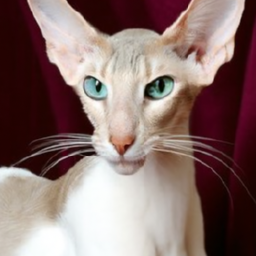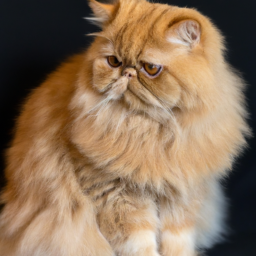Oriental
In the spotlight for today’s discussion is the beguiling and unique breed of feline known as the Oriental. Engaging in a thoughtful exploration of its enchanting characteristics, this campaign sheds light on its distinct features, charming habits, and even some little-known facts. Expect to be guided through a comprehensive breakdown that thoroughly illuminates this splendid breed, from its physical appearance to its perpetually entertaining personality. So, brace yourself for a furred ride that’s sure to leave pet lovers, especially cat enthusiasts, infinitely fascinated.
Origins of the Oriental Cats
Historical background of Orientals
The Oriental cats trace their roots back to the 1950s in Britain. They were originally bred to be Siamese cats but with a different coat color. The breeders aimed to maintain the physical characteristics and personality of the Siamese but introduce a variety in color, leading to the birth of Oriental cats.
Geographical regions of origin
Though the Oriental cats were bred in Britain, their ancestors are from an Asian lineage, specifically from Thailand. This ancestry is one of the reasons for their striking resemblance to the Siamese cats.
Development of the breed over time
With the initial breed being a success, the breeders continued work on developing more color and pattern variations, resulting in over 300 different varieties of the Oriental breed. The breed was brought to the United States in the 1970s and officially recognized by the Cat Fanciers’ Association (CFA) in 1977.
Basic Physical Characteristics
Coat patterns and colours
Oriental cats are known for their diverse coat patterns and colors. They can be found in almost any color, with solid, tabby, shaded, smoke, and particolor patterns. Their coats are typically sleek and shiny, adding to their elegant appearance.
Morphological traits
In terms of their physical structure, Oriental cats possess a lean and muscular body shape. They possess long legs, a thin tail, a wedge-shaped head, and large almond-shaped eyes which are commonly a bright green or blue.
Size and weight
These cats fall in the medium size range, usually weighing between 6 to 12 pounds with males, typically on the higher end of this scale. Their size does not reflect their activity level as Oriental cats are known to be very active and athletic.
Distinctive features of the breed
Oriental cats are often recognized by their large ears, which are set wide apart, and their long, slim bodies. Additionally, their characteristic almond-shaped eyes enhance their distinct appearance.
Behaviour and Temperament
Personality traits
The Oriental cats are very affectionate and social. They crave constant involvement with their owners and their surroundings. They are very intelligent, curious and known to be great communicators.
Level of activity
Highly energetic and playful, the Oriental cats need attention and stimulation to keep their intellect and bodies active. Daily play sessions are a must to keep these cats happy and healthy.
Social behavior
These cats bond quickly with their households and become a complementary part of their day-to-day lives. Oriental cats thrive on company and interaction.
Interaction with humans and other pets
Although Oriental cats can do well with other pets, their dominant and possessive nature may cause friction. They tend to demand undivided attention from their human companions and prefer to be the sole apple of the eye.
Health Issues Common in Oriental Cats
Hereditary conditions
Like many breeds, Oriental cats have a risk of genetic health issues such as Progressive Retinal Atrophy (a condition that can cause eventual blindness) and heart disease. They also share genetic variations with the Siamese breed, and hence, may suffer from issues affecting the latter.
Diet-related health problems
Obesity can be a concern if the Oriental is allowed to overeat, hence portion control and balanced nutrition are essential.
Preventive healthcare measures
Regular vet check-ups can aid in early detection and prevention of many health issues. Timely vaccinations and regular screening for common cat diseases help ensure optimal health.
Maintaining your Oriental Cat’s Health
Balanced diet requirements
A balanced diet is crucial for an Oriental cat’s health. High-quality cat food that fulfills their nutritional needs – proteins, fats, carbohydrates, vitamins and minerals is advisable.
Exercise and play
Engaging the Oriental in active play sessions helps to keep them fit and at an ideal weight. Puzzle toys, laser pointers, or feathers on a wand can be used to ignite their playful instincts.
Routine health check-ups
Regular health checkups are important for early detection of potential health issues. Bi-annual vet visits are generally recommended for adult cats.
Grooming Needs and Tips
Coat care and brushing
Even though the Oriental cat has a short coat, they still benefit from regular brushing sessions. Use a soft bristle brush to keep their coat gleaming and healthy.
Bathing and nail care
Bathing is not frequently required unless the cat gets into something messy. Regular trimming of nails, however, is necessary for their comfort and health.
Dental hygiene practices
Brushing their teeth regularly using cat-appropriate toothpaste will help avoid dental issues. Professional dental cleaning by a vet may also be necessary.
Training your Oriental Cat
Training techniques
Orientals are intelligent and can quickly pick up tricks beyond the usual feline behaviour. Using positive reinforcement techniques, such as praise and treats, can be successful.
Use of rewards and reinforcements
Due to their sociable nature, Orientals respond well to positive reinforcement. The use of treats, toys, and lots of praises can aid in training them.
Common challenges and tips to overcome them
Given their playful nature, Orientals might be too excited to focus on commands. Patience and consistency are key in overcoming this challenge.
Accommodating an Oriental Cat in your Home
Space requirements
Orientals are active cats and will enjoy a home with enough space for them to roam and explore. They are also great climbers, so cat trees or shelves would be a good addition.
Toys and enrichment
Interactive toys, tunnels, puzzles, and scratching posts will keep the Oriental entertained and ensure they get enough stimulation.
Interaction with other household pets
If there are other pets in the house, gradual introductions alongside positive reinforcement should be done to foster a positive relationship.
Adopting an Oriental Cat: Things to Consider
Choosing a reputable breeder
It’s important to choose a reputable breeder who ensures the cats are bred in a safe environment, free from health and behavioural issues, and are properly socialized.
Costs of owning an Oriental Cat
An Oriental cat can be a pricey breed. Added to the initial cost, costs for a balanced diet, grooming, vet bills, and toys should be considered.
Time and commitment required
Orientals require constant love and attention. If you lead a busy lifestyle or are frequently away from home, this might not be the breed for you.
Dispelling Myths about Oriental Cats
Common misconceptions and stereotypes
There are misconceptions that Oriental cats are aloof and standoffish due to their Siamese ancestry. However, they are affectionate and crave human interaction.
Truth behind the myths
Oriental cats are actually quite the opposite of these claims. They are playful, outgoing, and very sociable. They tend to form strong bonds with their humans and require their attention.
Promoting a balanced understanding of the breed
Oriental cats are a unique breed with their own quirks and charms. They make great companions for those who can meet their activity levels and need for companionship. Understanding and appreciating the breed’s unique characteristics will help promote a balanced view of these colorful and personable cats.


